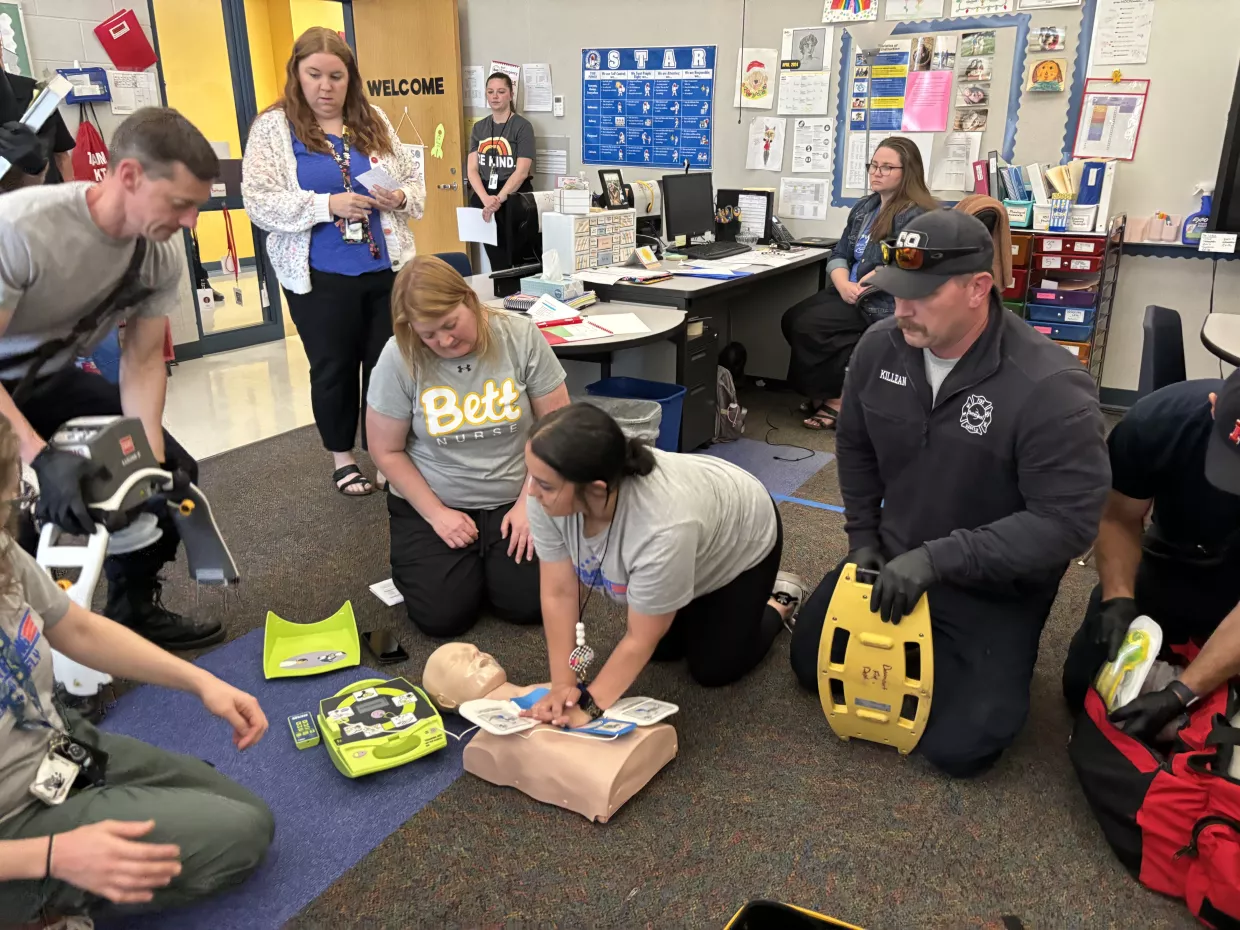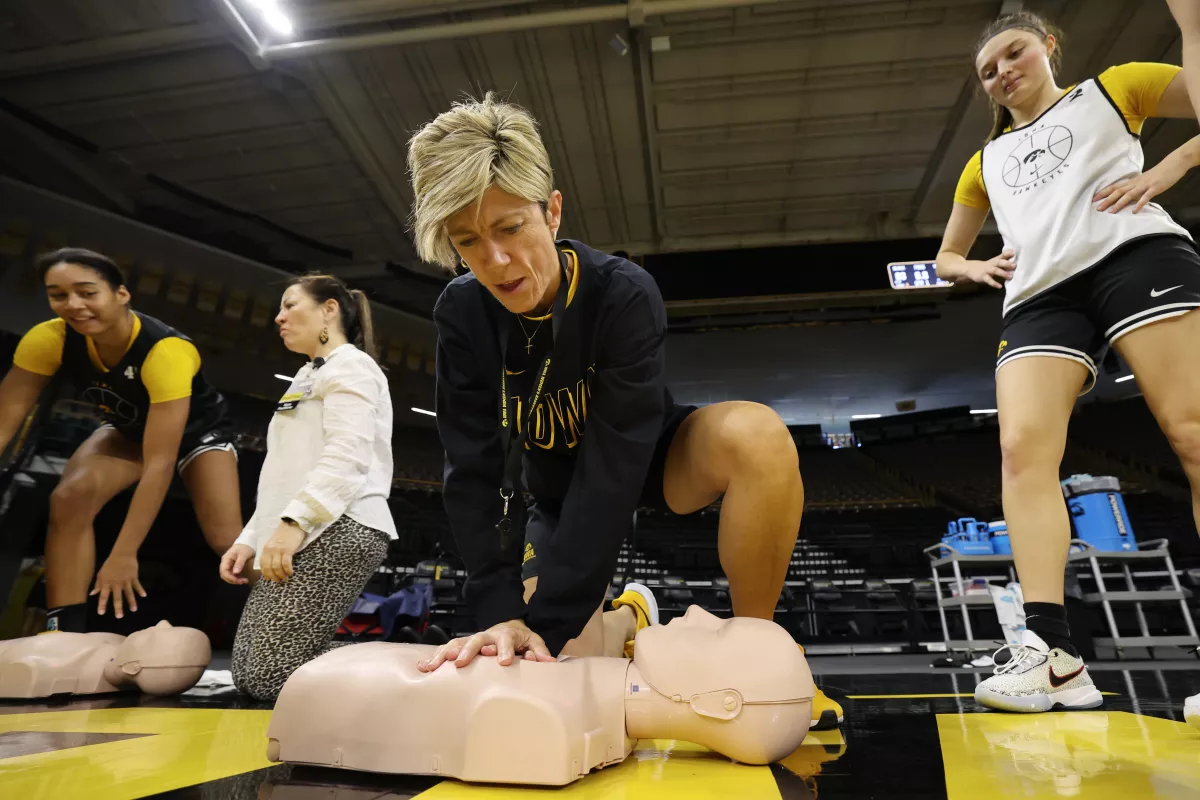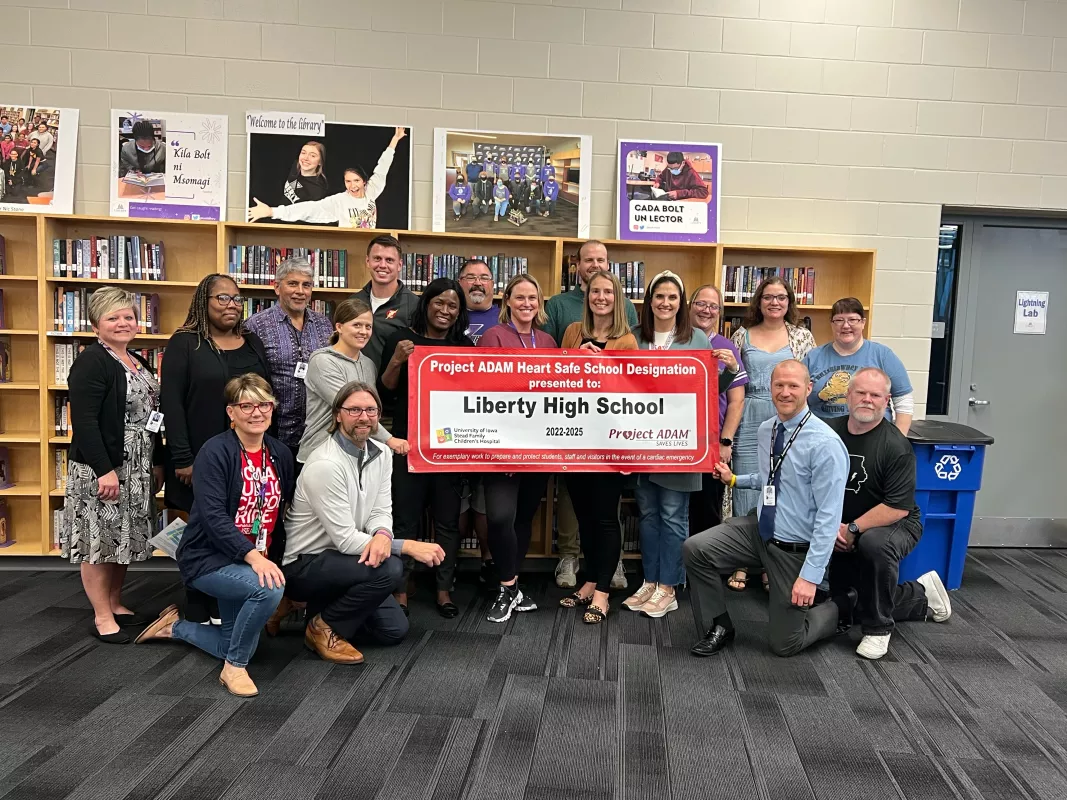UI Health Care team helps schools, communities stay ready for cardiac arrest
16 schools achieve "heart safe" designation in first two years

The UI Health Care team working to bring CPR and automated external defibrillator (AED) education to schools has several statistics that show why the training is needed. But even better than that, they have proof that the training has helped save a life.
“One of the first schools we designated a Heart Safe school had to put their plan into place when a student collapsed during the school day,” says Gary Beasley, MD, pediatric cardiologist and co-director of the Project ADAM: Iowa Heartland program based at University of Iowa Health Care Stead Family Children’s Hospital. “The staff called on their training and did what they needed to do, and the student was alert and awake before he arrived at the emergency room.”
“This has already proven to be beneficial,” he says.
Making an impact
Since the program’s inception at the children’s hospital in 2022 the team has designated 16 schools in eastern Iowa as Heart Safe schools and has provided training to several athletic programs at the University of Iowa. Project ADAM: Iowa Heartland is the only program of its kind in Iowa, and Beasley hopes to expand the program into the Des Moines area, as well as further west.
“At any given point during the day, about 20% of the U.S. population is in school,” Beasley says. “With this training, we would have a significant part of the population covered.”
He says the average survival rate for someone experiencing a cardiac event in school is about 12%, but that rate jumps to 75% in a school that has had AED training.


“This program is good not only for students, but for the school staff, and parents and grandparents who are there for events,” Beasley says. “The more you train people who are in the community, the more you’re helping that community.”
Trudy Pierick, MSN, ARNP, the program’s co-medical director, says the school nurses are leading the program in each school but notes that in many school districts, the nurse splits their time between buildings.
“Having several staff members trained means there is always someone with that knowledge in the building,” she says.
Minutes matter
Local emergency personnel have taken an interest in educating the schools, as well, Pierick adds. Many emergency response teams have participated in school trainings to give staff a real look at how their efforts would help in an emergency situation.
Those connections are important, especially in the rural areas, says program coordinator Brenda Haag, BSN, RN, PCN.
“A lot of small towns in Iowa have lost their emergency medical service programs,” she says. “If you’re in one of those small towns, it could take 20-25 minutes before someone from the closest town gets there.”
And those minutes matter. Beasley says after the first four minutes of a cardiac arrest, survival rates drop 10% for every minute care is delayed. And while most districts may never need to use their AEDs, he says, it’s good to be prepared.
“Statistics show that the likelihood of having a cardiac event in a school is the same as that school having a fire,” he says. “Schools have fire drills several times a year. So we want to give schools the resources to have these kinds of drills, too.”